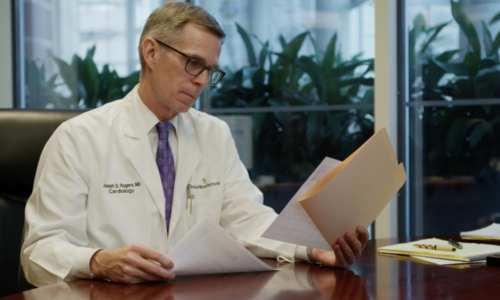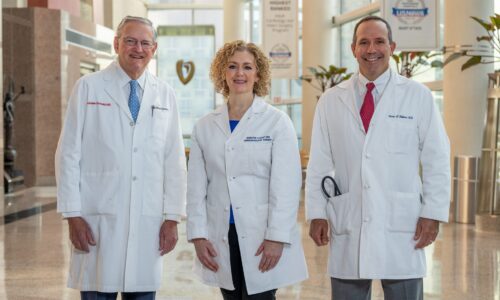Related Articles

Innovations in Minimally Invasive Aneurysm Procedures
Texas Heart Medical Group doctors have always been involved in developing innovative new therapies and testing the latest devices.
Interventional cardiology was in its infancy when the Texas Heart Institute was founded in 1962. In fact, the first human coronary angioplasty wasn’t performed until 1977. Thanks to work done since then, specialists in interventional cardiology now use extremely sophisticated catheters inserted percutaneously to perform a wide array of procedures that would have required surgery in the past.
A glance at a Texas Heart Institute press release from 1998-99 gives a snapshot of just how many new catheter-based technologies were emerging at that time. One landmark of note from 25 years ago: Dr. Krajcer was the first cardiologist to use percutaneous endovascular techniques to address abdominal aortic aneurysms. The news was reported to patients in the Fall 1997 issue of Innovator, which was published by St. Luke’s Episcopal Hospital. By 1998 the first cases were published in the peer-reviewed literature and in 1999 one of the devices tested at THI was approved for commercial use by the FDA.
Aortic aneurysms are a life-threatening condition caused by a weakening of the vascular wall of the aorta. They usually occur either in the abdominal (stomach) or thoracic (chest) areas. As a result of this weakening, the wall “bulges out” and may burst. A rupture of the aorta most often leads to death in a matter of hours or even minutes.
Percutaneous endovascular abdominal aortic aneurysm repair (PEVAR) was designed to benefit patients who were not good candidates for the more invasive, surgical approaches to placing a graft. From one of the press releases.
“During this non-surgical procedure performed in the cardiac catheterization laboratory, a stent graft is inserted into the patient through a one-inch incision in the groin. The tubular device is threaded through the artery using a catheter and is positioned so that when it is deployed, it covers, or “excludes,” the aneurysm. This provides a channel through which blood can flow, therefore relieving pressure against the stretched-out and weakened artery wall.” — Dr. Zvonimir Krajcer


